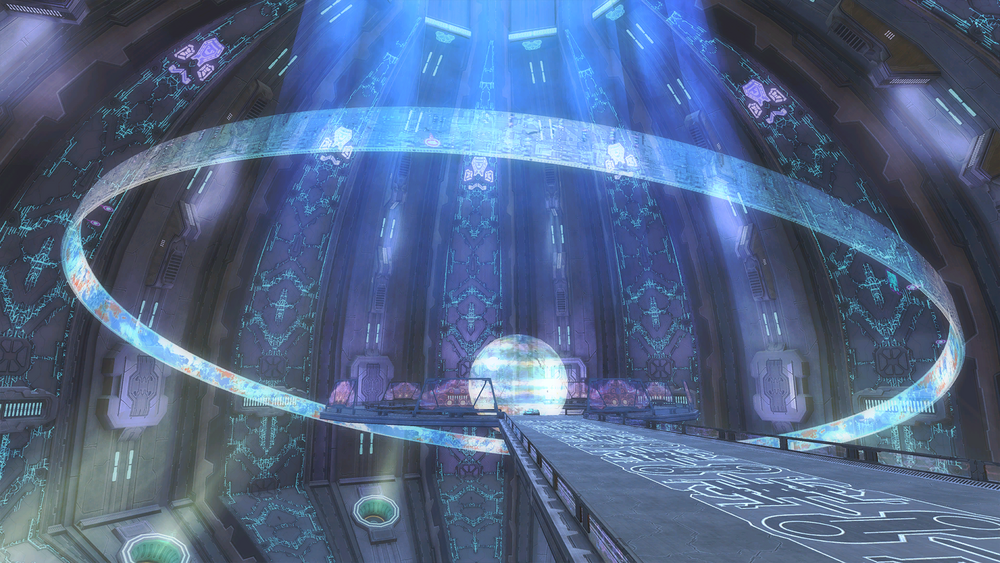Liminality in the Halo Universe
The Truth and Reconciliation

Celebrating 20 years of Halo, I can’t overstate how recognizable and influential the Halo Universe is. With 343 Studio’s acclaimed Halo Infinite and a long-awaited Halo TV adaptation on the cusp of release, the series may garner even more popularity with a whole new generation of fans.
With two decades of Halo now in the books, I wanted to reflect on an aspect of what makes this game series so great. There are the more prominent criteria for Halo’s greatness, like the multiplayer experience, the tight controls, the fun gunplay, the notorious music, and the sprawling campaigns. I, however, want to take some time to explore a particular element of both the architecture and story of Halo.
The Silent Cartographer

Have you ever been in a physical space that gives you an odd feeling? Like being inside a quiet school hallway or an empty, abandoned mall? Not necessarily fear, in the traditional sense, but creeped out like you’re holding hands with apprehension. These are examples of liminality and a liminal experience. In an architectural sense, a liminal space is built for passage from one area to another, like hallways, stairwells, waiting rooms, empty laundromats, or airports. Rooms built for brief human interaction but empty and lacking occupants — spaces created for a function, vacant and waiting for use.
From the Latin word Limen for ‘threshold .’ Liminality was first an anthropological investigation about coming-of-age ceremonies and the ambiguous space between two identities. There is a boy before the ceremony and a man after, but what of the transitional space? That ambiguous middle space is the threshold. It can, however, be applied more broadly. It can describe a moment like a rite of passage as mentioned, a period like your adolescence, or a stretch that takes an entire lifetime like a longstanding war or being an outcast.
The Pillar of Autumn


I can close my eyes and see the Halo: Combat Evolved title screen, and I can hear the music. I could sing it to you too if you’d like — a whole generation of gaming nerds can belt it out for you. I remember going to my local Blockbuster directly after Christmas, the magic of receiving a new console still in the air mingling with that lovely fresh plastic smell.
I took home a little game called Halo: Combat Evolved. I thought, ‘ hey, I’m 11, I’m older, I’m evolved too,” while I stood at the threshold of adolescence. It is the only time I can distinctly remember pulling an all-nighter alone to play a game. It’s also the only time I remember my father concernedly turning a console off when he saw me with bloodshot eyes the following day.
There is something liminal about Halo, beyond the Master Chief spearheading many of our teenage years. Head writer Joseph Staten said it best in directing Martin O’Donnell’s musical composition. He remarks that the music needs to evoke an “ancient, epic and mysterious” atmosphere. The second you load into the title screen, you hear the now-famous Gregorian chants and see the view of a strange ringworld. Mystery and liminality are at the core of Halo’s narrative.
Assault on the Control Room
Alpha Halo, from Halo CE, is orbiting a gas giant called “Threshold.” Maybe we are onto something here… The notorious Halo Arrays are liminal in their intent. These massive constructs are effectively the last resort weapon to reset the galaxy. These superweapons sit at the cusp of one universe and the next. They aren’t inhabited or lived on but serve a purpose.
Forerunner buildings are not populated spaces but transitional activation centers. The Brutalist Forerunner architecture throughout the game highlights that objective. Halo is full of a blocky minimalist style that leaves no room for artistry or comfort. The environments are beautiful and foreign, but they are direct and look built with intention.
Halo is full of corridors, elevators, empty control rooms, and generator rooms. When things are quiet in Halo after a fight or entering a new area, there is an anticipation, like we’re expecting someone. This tension works exceptionally well in convergence with Halo’s combat. Already outnumbered and outgunned, Master Chief has to approach every room cautiously. Some of the best fights include the infamous invisible Elites — a clever enemy type that not only plays with your senses but this overarching sense of uncertainty.
The environment also feels like it’s waiting for someone and some of the levels like Assault on the Control Room and 343 Guilty Spark have an eerie ambiance. The environment feels like it has been sitting a millennium untouched and at the ready, in case the universe needs a reset.

The story of Halo wouldn’t be what it is without the combat, music, and other features. But, I feel confident in saying that it is liminality that underlines and directs those more pronounced elements. The architecture, the music, and the story are full of threshold spaces and situations.

